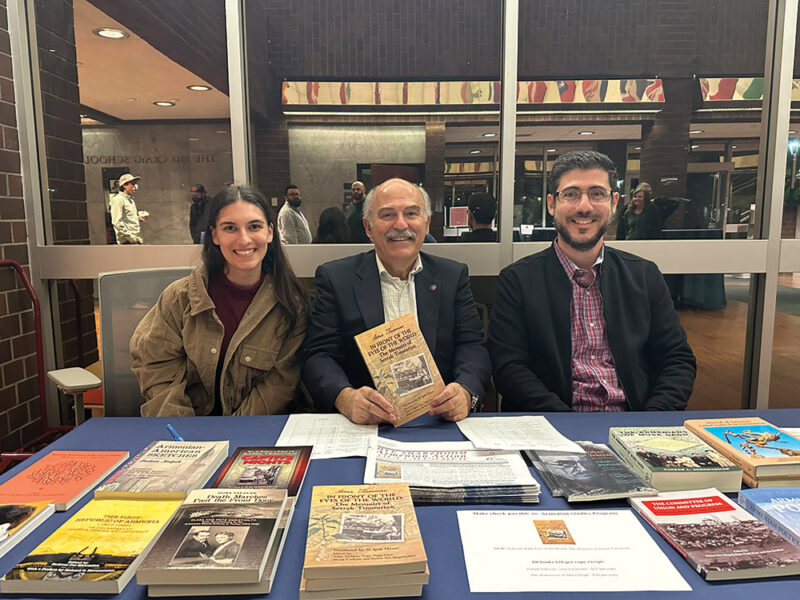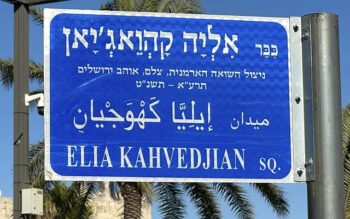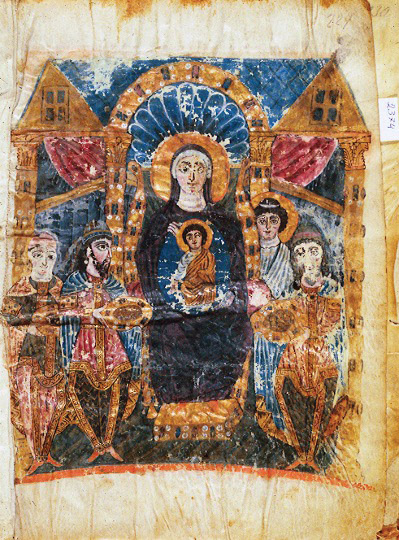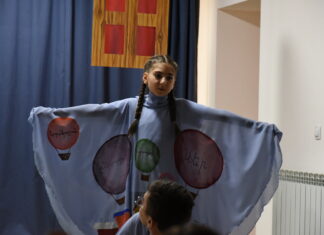By Careen Derkalousdian
FRESNO, Calif. (HyeSharzhoom) — “Manuscripts are the living works of the Armenian people,” said Prof. Barlow Der Mugrdechian. On Thursday, November 9, Der Mugrdechian, Berberian Coordinator of the Armenian Studies Program at Fresno State, gave a presentation on “Armenian Manuscript Painting: The Early Tradition.”

Der Mugrdechian has taught courses in Armenian art and architecture at Fresno State for more than thirty-eight years. He is a former president of the Society for Armenian Studies and the General Editor of the Armenian Series at Fresno State. His presentation was part of the Grace and Paul Shahinian Armenian Christian Art Series, sponsored by Dean Shahinian.
Der Mugrdechian began his lecture by discussing the creation of the Armenian alphabet in A.D. 406 by St. Mesrop Mashtots. He noted that one of the reasons for the creation of the alphabet was to promote and instill Christianity within the Armenian people. The majority of Armenian illustrated manuscripts are Gospels, with text from the books of Matthew, Mark, Luke, and John. These Gospel manuscripts are often called “illuminated,” a term which symbolizes how Jesus Christ brought light into the world; in the same way, the painting or illumination of manuscripts brings the light of Christianity to the Armenian people.
It is estimated that there are more than 30,000 Armenian manuscripts in existence today, of which over 10,000 are illustrated. The largest collection of Armenian manuscripts in the world is held in the Mesrop Mashtots Matenadaran in Yerevan, Armenia, where over 12,000 manuscripts are held in vaults under specific temperature and humidity conditions. The “Mayr Tsutsak” [Mother Catalog] on the Matenadaran website provides detailed information on many of the manuscripts held in the Library. The second largest Armenian manuscript collection is located at the St. James Armenian Monastery in Jerusalem, where over 4,000 manuscripts are held. Other notable manuscript collections are located in Venice, Italy; Vienna, Austria; and the Armenian Catholicossate of Cilicia in Antelias, Lebanon.
Der Mugrdechian highlighted the unique structure and order of Armenian manuscripts, beginning with the Eusebian Letter and Canon Tables and concluding with the colophon, or memorial note. The Eusebian Letter is essentially an explanation of how to use the following canon tables, which are an index that helps one find similar passages in the Gospels. Following the canon table are a series of Narrative Miniatures that depict significant events from the Bible. These are followed by images from the Life of Christ Cycle, the Portraits of the Evangelists, and the Gospel text itself. A memorial note by the manuscript’s scribe called a colophon signifies the end of the manuscript.








